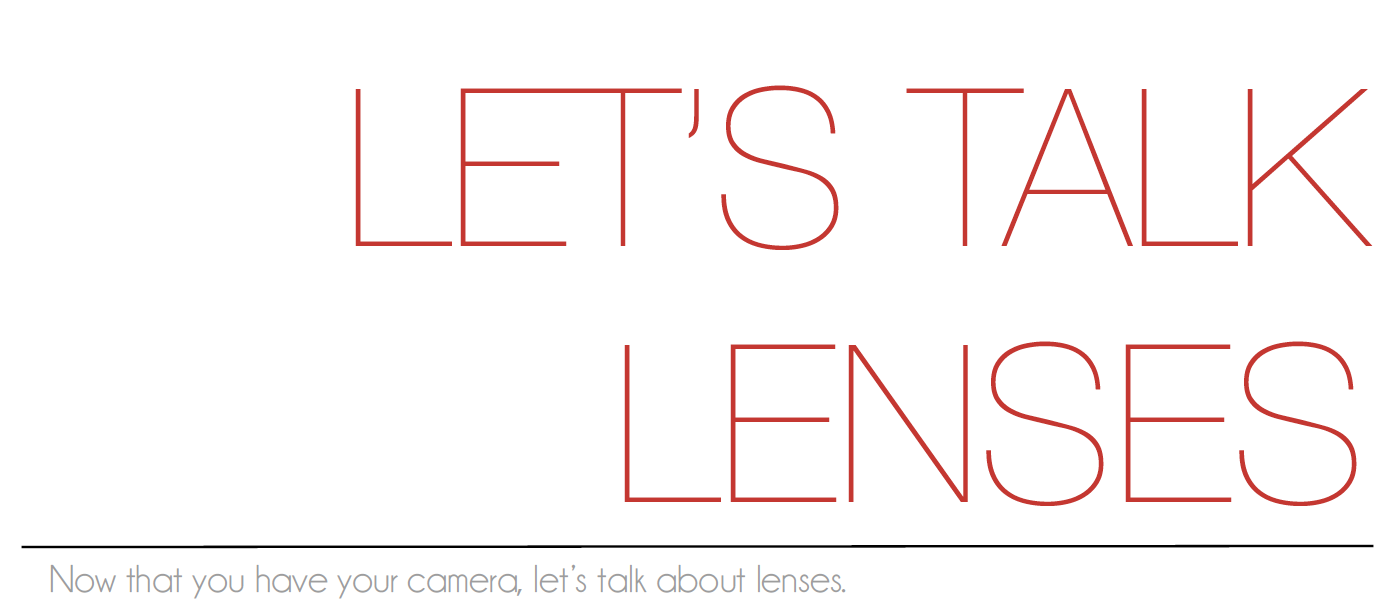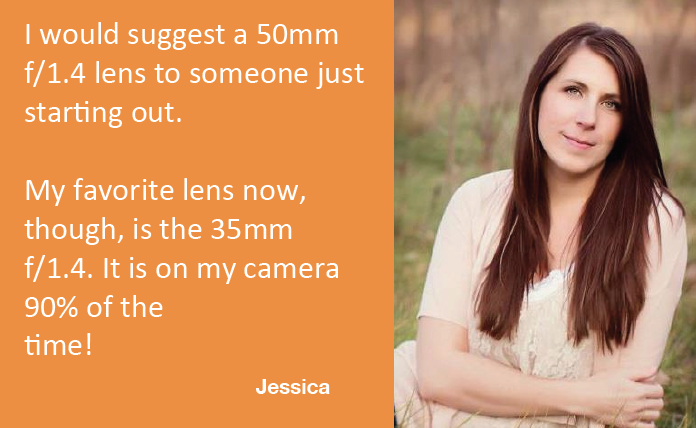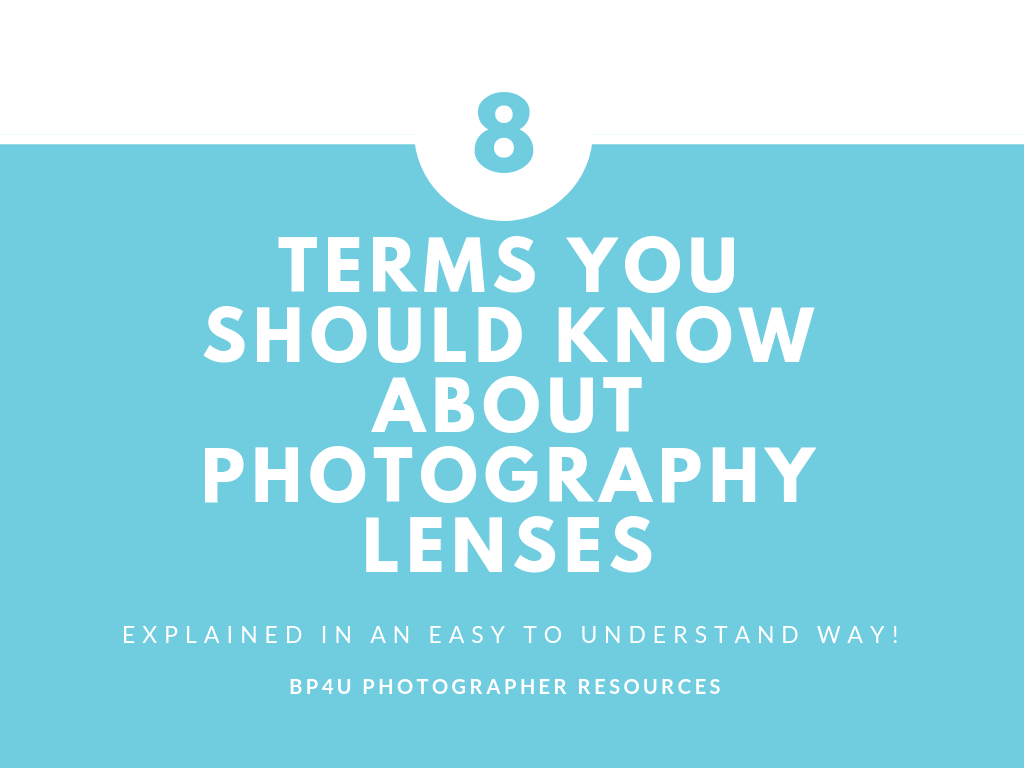Here are a few terms you should know about lenses. I’m going to go through each one of these and give you the technical definition and then a non techy way of realizing what it actually is. I don’t know about you but that always helped me!

Aperture:
The aperture is how wide your lens opens when it takes the picture. It controls how much light gets through the lens. A large aperture lets in a lot of light because the opening is much wider than a small aperture, where little light is let through. This is measured in f/stops.
The lens that probably came with your camera (if you bought it in a kit) would probably have an f/stop of 3.5-5.6, so basically you know that delicious blur you see in photographer’s photos? You aren’t going to be able to get it with that lens.
Depth of Field/Bokeh:
The depth of field is the amount of blurring in the background and/or foreground of your photo. This blur is more commonly referred to as a “bokeh.” A large depth of field will have less bokeh than a shallow depth of field. Bokeh, my favorite thing ever in my photos. So if you want that nice blur to your photo you’re talking about bokeh. That’s the technical term for it.
F/Number (F-STOP):
The f/stop is what controls the bokeh. The way this is set up can be confusing. A large aperture has a small f/number and a small aperture has a bigger f/number. An f/1.8 lens will give you a lot more light and bokeh than a lens that only can go down to f/4.
So, if you are shooting at an f/stop or aperture of 4, it’s not going to be as blurred in the background, but if you have a lens taht can go down to 1.2 it’s going to be BLUR central! If you want to shoot with it wide open. Shooting with it wide open would mean that you’re going to open up the lens or the f/stop to 1.2!

Focal Length:
The focal length is the distance between your camera and it’s closest focus point. This is measured in millimeters (mm). I.E. 35mm, 85mm, 70-200mm. This one is pretty self explanatory!
Fast/Slow:
A fast lens is one that has a large aperture (small f/stop so like a 1.8 or 1.2 lens!). A slow lens won’t be as good in low light situations and won’t give you as much bokeh. If you want a lens to be able to perform in low light (or dark areas) you’re going to want a lens that can at least do f/stop of 1.8.
Zoom/Prime:
A zoom lens has a wide range of focal lengths. A prime lens has a fixed focal length. So a fixed focal length would be like a 35mm lens. That lens is what the human eye sees. It’s best for lifestyle images and weddings. It can be used in portraits. It’s a great lens but if you want to zoom in, you can’t do that with the lens because it’s set to 35. Now on the 70-200, it can go from 70 all the way to 200 and you zoom in and out. Prime lenses – no zooming in and out.

Wide Angle/Telescopic:
A wide angle lens will let you get more of your surroundings in the photo at a closer range. Have you ever had to shoot a large family photo and you kept having to step back and back to get them into the frame? Well a wide angle lens would make it so that you don’t have to keep stepping farther and farther back. A telescopic lens will let you zoom in and isolate your subject from a distance.
Kit Lens:
This is the lens that comes with your camera if you buy it is a kit or a bundle. Usually, this a wider zoom lens, like an 18-55mm. They are probably going to have an f/stop of 3.5-5.6 or so. Which means, they aren’t going to be the best lens for getting that background blur in your portraits or do that well in low light (dark) conditions!
There you have it! I hope you learned a lot about some key terms used when talking about lenses. Have any questions? Let me know in the comments!
Want to learn more? Check out How To Start Your Photography Business!

